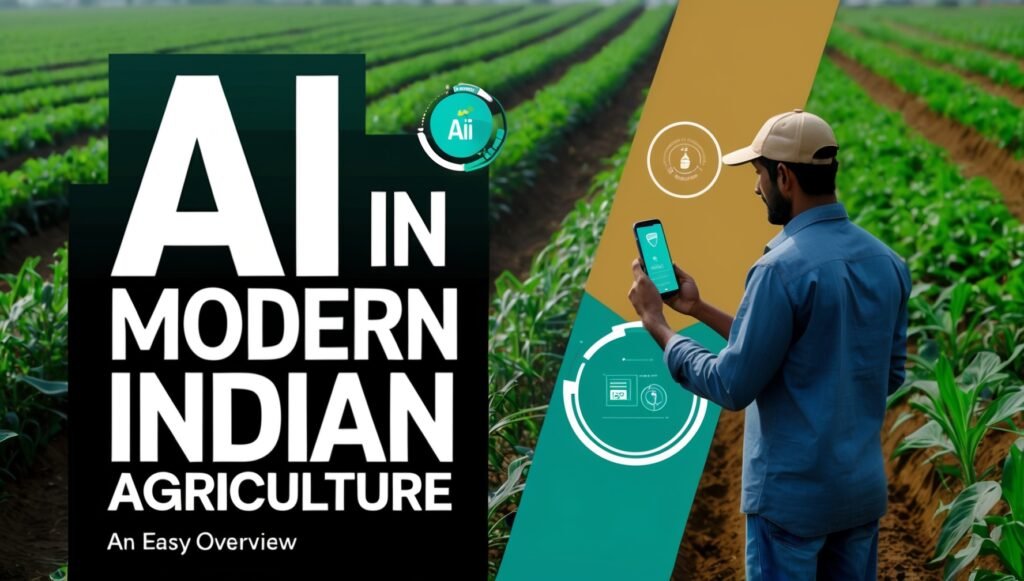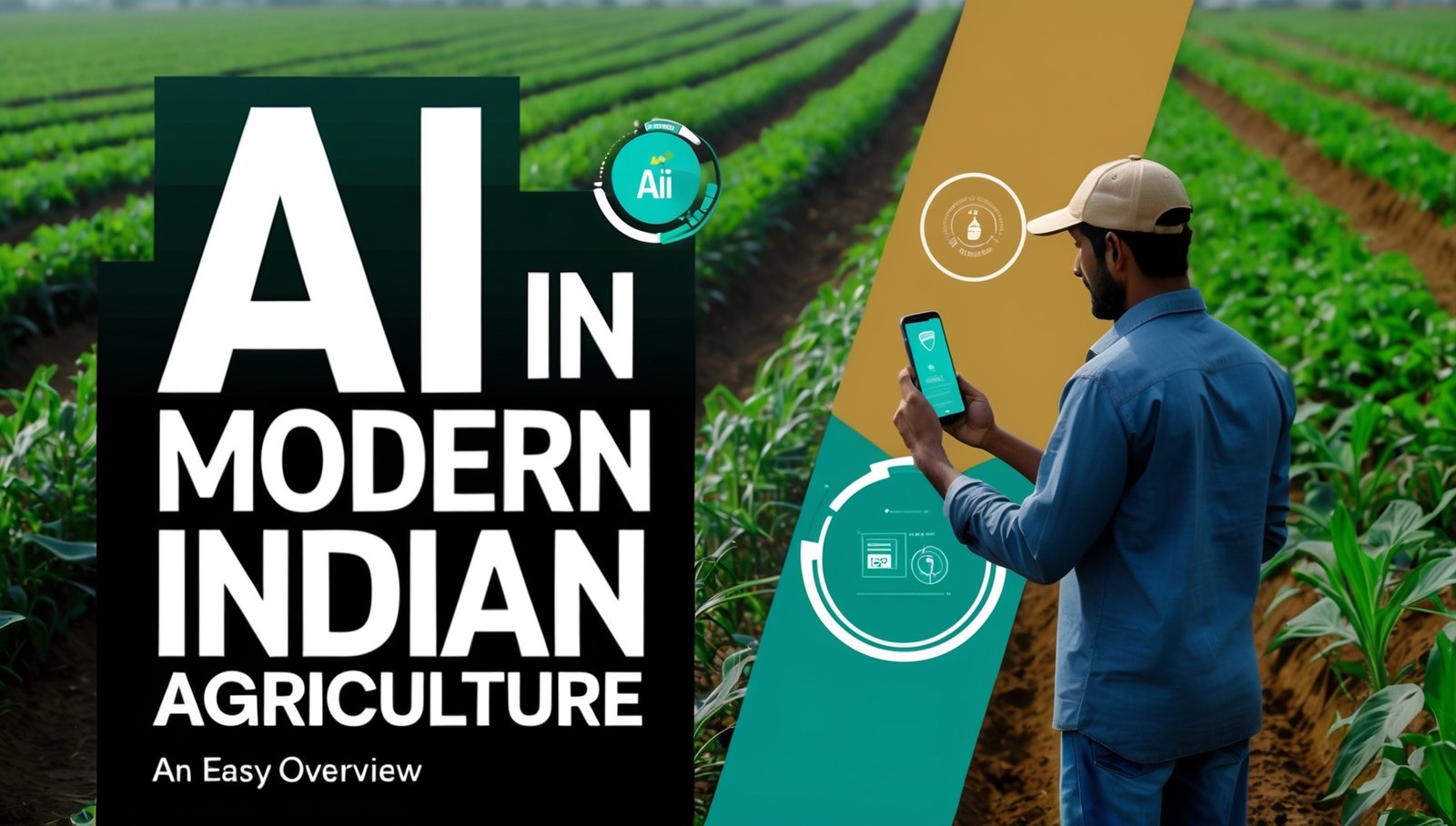Discover how artificial intelligence is transforming Indian agriculture from precision farming to smart irrigation and what it means for the future of farming

As of September 30, 2025, India’s agricultural landscape is undergoing a profound transformation, driven by artificial intelligence (AI). With agriculture employing over 42% of the workforce and contributing around 18% to the GDP, the sector faces challenges like climate variability, low productivity, fragmented landholdings, and resource scarcity.5 AI is a game-changer, shifting traditional farming toward precision, data-driven practices. From predictive analytics for crop yields to AI-powered drones scouting fields, these technologies empower 125 million smallholder farmers to boost incomes and ensure sustainability. In this overview, you’ll explore how AI is reshaping Indian agriculture, its key applications, government backing, and the road ahead.
The Need for AI in Indian Agriculture
India’s farms face relentless pressures. Erratic monsoons, pest outbreaks, and post-harvest losses up to 40% strain the system.8 Small farmers, often working plots under 2 hectares, struggle with limited access to timely advice on irrigation, fertilizers, or markets. Climate change worsens this, with rising temperatures threatening staple crops like rice and wheat. AI in agriculture offers a solution by analyzing vast datasets from satellites, sensors, and weather stations to deliver hyper-local insights.
AI models can forecast yields with 90% accuracy or detect diseases early, cutting losses by 20-30%.0 The global AI agriculture market is booming—from $1.7 billion in 2023 to a projected $4.7 billion by 2028 at a 23.1% CAGR—and India is at the forefront, blending tech talent with on-ground needs.0 This isn’t just about efficiency; it’s about resilience, helping you double incomes, as seen in pilots like Telangana’s Saagu Baagu project.8 For more on AI’s impact, check IEEE Spectrum’s insights.
Key Applications of AI in Indian Farming
AI’s versatility shines across the farm-to-fork chain. Here’s how you can leverage it:
Precision Farming and Crop Monitoring
AI optimizes every input. Tools like satellite imagery and IoT sensors track soil health, moisture, and nutrient levels in real-time. You’ll get tailored recommendations via apps—think “apply 15% less fertilizer here” to avoid waste. In Andhra Pradesh, AI sowing apps have boosted yields per hectare by 20%.9
Drones, armed with AI, scan fields for anomalies. Microsoft’s Azure Data Manager for Agriculture integrates weather and soil data to predict pest risks, as in Maharashtra’s sugarcane farms where yields jumped 40%.4 Recent developments highlight this: Syngenta’s AI solutions at DevCon 2025 in Pune are pushing precision farming frontiers.
Disease and Pest Detection
Spotting issues early saves crops. Neural networks identify diseases like wheat rust or apple scabs with 95% accuracy.0 The National Pest Surveillance System uses AI to flag climate-induced outbreaks, reducing losses for millions. Startups like AgNext deploy computer vision for on-field quality checks, sorting chilies by defects to fetch premium prices. These tools are scaling via WhatsApp chatbots, delivering alerts in your local language.
Smart Irrigation and Resource Management
Water scarcity? AI has answers. Algorithms crunch climate data to schedule irrigation, slashing usage by 30% under the “Per Drop More Crop” scheme.6 ICAR’s IoT systems automate drip irrigation, vital in drought-hit regions. Livestock benefits too: AI from CattleEye monitors health via image recognition, spotting illnesses before they spread.0
Market Access and Advisory Services
AI bridges farm to market. Chatbots like Kisan e-Mitra answer queries on schemes like PM-KISAN in 10+ languages, empowering 48.5 million registered farmers.1 Digital marketplaces use AI for price predictions, cutting middlemen. In Telangana’s chili pilots, AI advisors doubled farmer incomes through yield boosts and better pricing.6
| AI Application | Benefit | Example Impact |
|---|---|---|
| Precision Farming | Optimized inputs | 20% yield increase in Andhra Pradesh sowing apps9 |
| Disease Detection | Early intervention | 95% accuracy in pest ID0 |
| Smart Irrigation | Water savings | 30% reduction via PDMC scheme6 |
| Advisory Chatbots | Informed decisions | Doubled incomes for 7,000 Telangana farmers8 |
Government Initiatives Driving AI Adoption
India’s government is all-in on AI for agriculture. The 2024 Digital Agriculture Mission, with ₹2,817 crore ($338 million), builds AgriStack—a farmer registry linking 110 million IDs to crop data by 2027.1 This enables AI-driven advisories tailored to your needs.
Key initiatives include:
- AI Centres of Excellence: Three new hubs with ₹500 crore funding, focusing on region-specific models.
- AgriStack and Krishi Decision Support: Surveys covering 239 million plots feed AI for predictions.1
- MahaAgri-AI Policy 2025-2029: Maharashtra’s ₹500 crore plan integrates drones and AI sandboxes for startups.
- FutureSkills PRIME and NeGPA: Upskilling 647,735 farmers in AI via NICRA programs.2
The India AI Mission, highlighted at UNGA 2025, eyes frugal innovations for Global South agriculture. Funding includes $300 million for digital projects and ₹5,000 crore SCA for tech infusion.
Success Stories and Recent Developments
Real wins show AI’s impact. Project Farm Vibes in Baramati used AI to hike sugarcane yields 40% while cutting water use.2 Saagu Baagu scaled to 500,000 farmers, slashing pesticide use 9% and boosting chili yields 21%.6 In 2025, IBM-BharatGen partners build sovereign AI for agriculture, while Syngenta’s DevCon demos target sustainable yields.
Challenges and the Path Forward
Challenges remain: Digital literacy gaps affect 60% of rural farmers, infrastructure lags in remote areas, and data privacy concerns loom.7 High costs and fragmented data slow scaling. Yet, solutions are emerging. Public-private pacts, like WEF’s AI4AI, push inclusive models.7 By 2026’s India AI Impact Summit, expect multilingual AI and blockchain traceability to dominate. With ethical governance and training, AI could add $500 billion to agri GDP by 2030.5
Conclusion
AI is a lifeline for India’s 500 million farm-dependent lives. From drone-eyed fields to chatbot advisors, it fosters a sustainable, equitable future. As pilots prove, when farmers in Khammam double yields, the ripple reaches global food security. The journey’s young, but with bold policies and innovations, modern Indian agriculture is blooming smarter than ever. Explore more via WEF’s playbook on scaling AI in farming. Ready to farm the AI way?

Leave a Reply